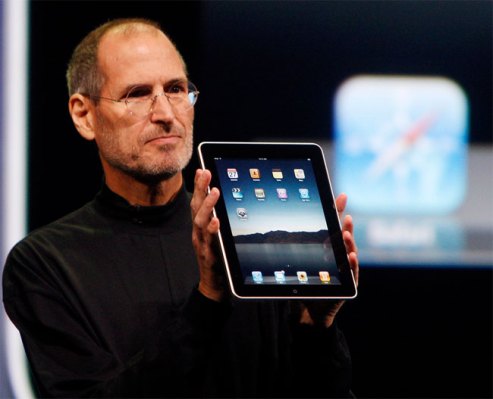Late Thursday, an extraordinary thing happened: Adobe announced in a blog post that it would not provide Flash Player support for devices running Android 4.1, and that it would pull the plugin from the Google Play store on August 15. The retreat comes five years after the introduction of the iPhone, the device which thwarted Flash’s mobile ambitions, almost even before they began.
That Adobe would make such an announcement nearly five years to the day that the first iPhone was sold is kind of funny. I’d like to think that the Flash team has a sense of humor and was well aware of the timing when it posted the blog entry, but I could also see the entry as unintentionally ironic. Either way, it caps off a five-year battle to win the mobile landscape — a war which for Adobe ended in defeat.
At the time the iPhone was announced, lack of support for Adobe Flash seemed like a glaring omission, for a platform that was so hell-bent on being a portable computing device. But it wasn’t until the iPad came out, two-and-a-half years later, that the battle between Apple and Adobe, Flash vs. HTML5, and “open” vs. “proprietary” reached a fever pitch.
The iPad Effect
The iPad was announced in January at WWDC, but wasn’t available until March. And when it did finally become available, people began to notice that the lack of Flash, which then was the de facto standard for video playback and interactivity on the web, was missing. For the iPhone, not having Flash was a minor annoyance — after all, few other smartphones had very good Flash support at the time… But for the iPad, which in many cases was being used as a laptop replacement, at least for consumption of media, that was a big deal.
It wasn’t long before Google latched onto this and began promising an alternative to the “broken” Apple devices which wouldn’t give users access to the full web, as publishers intended them to view it. It’s tough to believe now, but at one point, Flash on mobile devices was actually considered a feature. There was Google’s Andy Rubin in April 2010, announcing that Android would have full Flash support in Froyo, the next version of the operating system to be released.
The Impact Of “Thoughts On Flash”
Battle lines were drawn, and just a few days later, Steve Jobs issued his epic missive “Thoughts on Flash,” which sought to explain, once and for all, why Apple didn’t — and wouldn’t ever — integrate Flash into its mobile and tablet devices. There were numerous reasons, and Jobs debunked the trope of Flash being “open,” as well as its ability to access the full web. He also brought up security, reliability, performance, and battery life issues that plagued devices using the plugin.
Most importantly, though, Apple didn’t want Adobe developers to create cross-platform apps which didn’t take advantage of the most latest features, development libraries and tools. Jobs wrote:
“Our motivation is simple – we want to provide the most advanced and innovative platform to our developers, and we want them to stand directly on the shoulders of this platform and create the best apps the world has ever seen. We want to continually enhance the platform so developers can create even more amazing, powerful, fun and useful applications. Everyone wins – we sell more devices because we have the best apps, developers reach a wider and wider audience and customer base, and users are continually delighted by the best and broadest selection of apps on any platform.”
It turns out Jobs was right. When Flash finally did ship on Android devices, it didn’t provide users with the full web, as was promised. Android users who wished to watch videos on Hulu through the Flash browser, for instance, were met with a message saying that the content wasn’t available on the mobile web. Same thing for users who tried to access most premium video sites on Google TV, which also supported Flash. More importantly, even when those videos or interactive Flash elements did appear on Android devices, they were often wonky or didn’t perform well, even on high-powered phones.
The end result was that users stopped seeing Flash on mobile devices as a good thing, and developers quit trying to support the framework on those devices.
The Flash Issue Isn’t Just About Mobile
But the impact of that battle goes beyond just how people view content on mobile phones. While pretty much all developers have settled on building native apps or coding for the mobile web when trying to reach those users, the battle has also had an impact on the way that developers think about multi platform web development. Even when not building for 4-inch screen, they’re increasingly turning to HTML5 to build new user experiences or render interactive applications, rather than writing to be seen in the Flash player.
Video might be the last industry where the Adobe Flash Player continues to have a hold on how content is displayed, but even then, a growing number of sites are moving to HTML5-based video players for delivery. YouTube and Vimeo are leading that charge, displaying their videos in a HTML5 player first, when available, and only falling back to Flash when the player isn’t supported. And many others are following that lead.
Frankly, Flash had never been a huge business for Adobe, even when development for interactive websites using the plugin were in high demand. As time goes on, it will become an even less important part, as its development tools — where Adobe makes the bulk of its revenue — focus on catering to a developer base that is increasingly interested in building HTML5-based web applications. As more can be accomplished in-browser without a plugin, that’s good news for users and developers alike.
